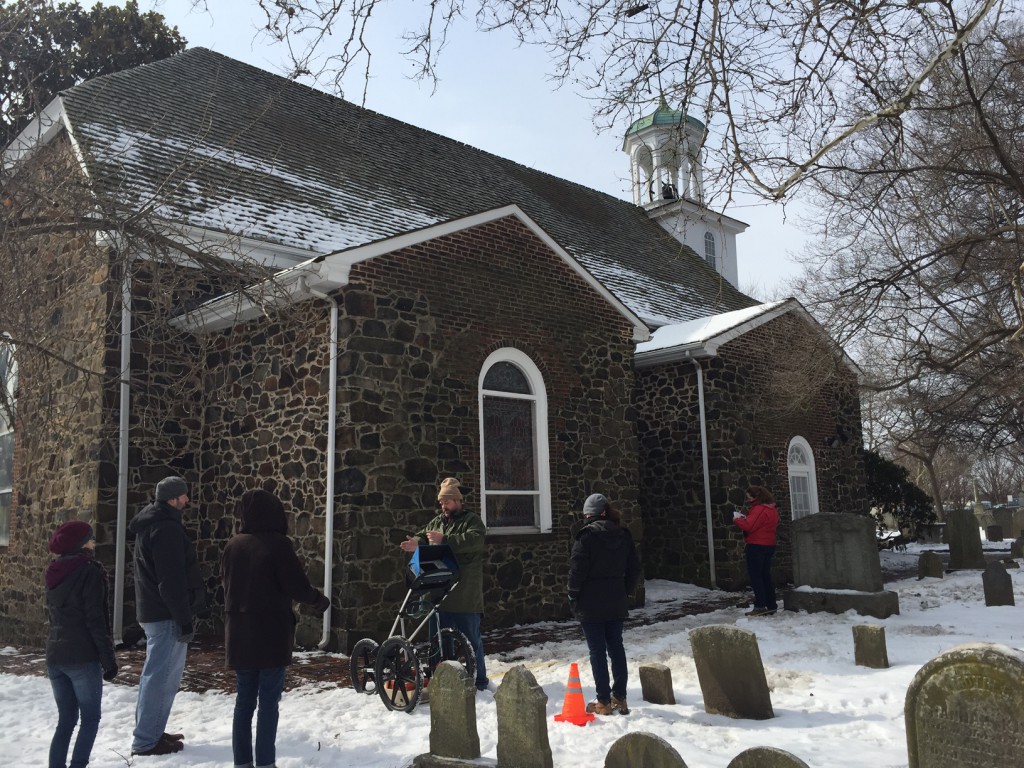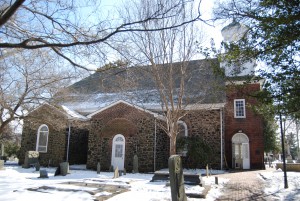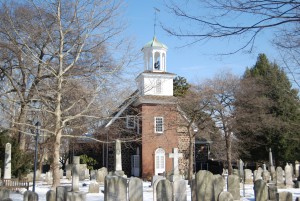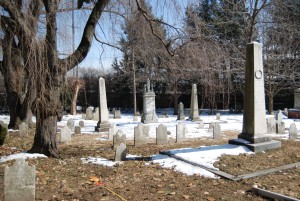As the semester came to a close, it seemed only fitting we do the same with our Shovel Test Pits (STPs). However, we had only just begun digging in the “North Lot,” as we call the property adjacent to Read’s home, and knew there was still a lot of work to be done there. As some continued the few remaining STPs in the Water Lot, the rest worked on the North Lot, while even more of us presented some of our finds to interested parties (including workers at the Read House, members of the Delaware Historic Society, civilians, etc.). Although a little cold, it was a beautiful day to be in the field and working for the last time.
The presenters had a lot to be fearful of as we faced people who prided themselves in Delaware history. We were merely students who had researched New Castle only for this class. However, Ashley gave a wonderful speech discussing the importance of collaborative archaeology and historical research, and we headed outside for my speech. I, Kate Cescon, had been introduced to a watercolor by William Birch (1805) depicting the Water Lot of George Read II-with an intricate garden! I discussed the archaeological compatibility with this documentation; there seems to be little evidence of this garden, unfortunately. Chrissy presented a discussion of “foodways,” as we call the study of food in relation to culture, by using a cow tooth she found in her STP; she discussed the possibility of it being used in Cow’s Head Soup, and what this could mean for the individuals in the area. A Read House neighbor, Jim Meek, added that a building next to the Water Lot was actually a cattle distribution center of sorts, which was an interesting piece to add to Chrissy’s puzzle. Ashley briefly discussed the STP she had been working on in relation to the 1804 shoreline, and Marissa did a small introduction to an STP beyond this shoreline, that she presumed to be a trash dump (from which we recovered a pipe stem, a white cup or bowl fragment, and glazed redware!).
We continued our travels to the North Lot where Kitty and Marissa presented finds on a man named Joseph Wood, who owned this lot in the early 1700s. Apparently, he requested being buried with his wife in the cemetery of Emmanuel Church, but could not be found there. He also had an unnatural interest in one of his slaves called “Negro Grace,” who he made sure would stay on his property even after his death. Some have made the assumption that she may have been a daughter of his; this is a possibility but we cannot be sure. After our discussion of the North Lot, we concluded our presentation outside the Read House. Caroline told a wonderful story about the Lairds, their yacht basin and tennis courts, and Mickey concluded by emphasizing the importance of the collaboration of archaeology and historical documentation.
While we were marching around the grounds, other students in the afternoon section were posing as our displays for how archaeology works. In the morning session, one student, Brielle, was chugging along to Level 18 of her STP 152.5 E25! Even this deep (though her levels were never quite the standard .5 feet), she was still finding oyster shells, brick, glass, and ceramic, as well as a pipe bowl and painted ceramic. At the same time, other students had been working on the North Lot, discovering interesting soil types, such as a layer of sand above mottled clay. In fact, many had this type of soil, as well as this interesting ashy, gray soil (sometimes in baseball-sized chunks) that has yet to be identified. Mostly, though, since these STPs are not very deep, there have been little artifacts to note. Marissa, however, found curved glass, iron stone, as well as brick and ceramic.
In the afternoon session of our class, Becca spent the day closing her STP, which could not go down any deeper as it had hit a layer of schist. She cleaned the hole thoroughly, and photographed it for our records. This STP marked a corner of a structure we discovered in our GPR survey (Ground Penetrating Radar). Other students were finding some more interesting materials as they dug deeper. Colleen noted ceramics, iron rock and bone sherds, as well as that interesting gray soil explained above. This was the same STP Marissa had been working on in the morning section. Leah was excavating the same hole as Elanor, and was surprised to find, in later levels, an oyster shell containing this odd, purple powder. Although it is speculative, one of our supervisors said it may have been burnt, which would be an interesting development in the life of this oyster.
In the end, our days in New Castle are over, except for those lucky few that will be backfilling many of the STPs this Friday, May 22. These blogs have been focused on what we have discovered and learned in the field, but there is a lot more to learn after entering the lab. Hopefully, we will provide more complete answers to some of the questions we have continually asked throughout the course of this semester. The beauty of archaeology is that there is always more to learn.




